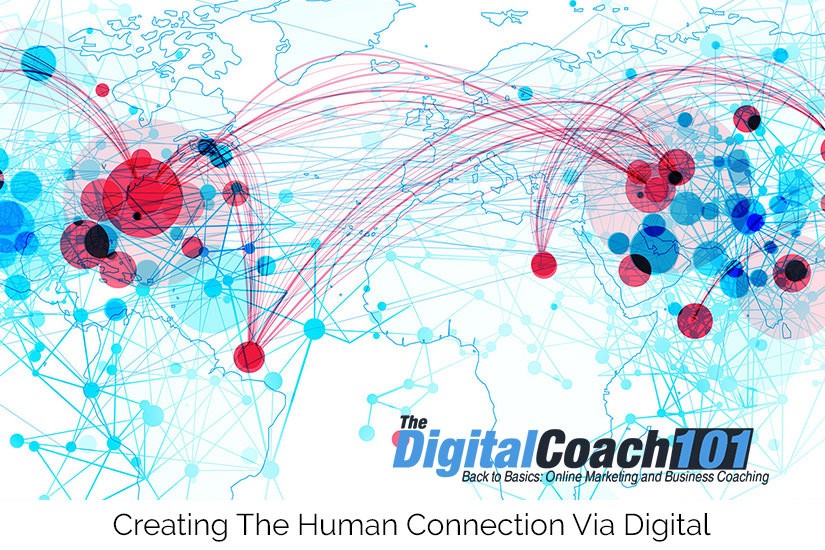How The Right International Digital Marketing Strategy Can Take Your Business To A Global Audience
One of the really great things about living in such digitally connected times is that we are no longer constrained by traditional limits. Our computers and mobile devices can take us to wherever in the world we want to go. In the amazing realm of cyberspace, borders cease to exist, and barriers simply disappear.
In this exciting digital world, we can talk “face to face” with friends and families on the other side of the planet whenever we want. Communication is virtually instantaneous, and instant gratification is exactly that.
Businesses, too, are major beneficiaries of this globally connected audience. E-commerce has a huge advantage over traditional retail in that it is completely unhindered by time and place. Consumers can shop anywhere, at any time. This offers them previously unimagined freedom. They can look for what they really want, instead of having to settle for whatever they can find at the local shop. Anyone can buy anything, anytime, and get it delivered anywhere. That’s the beauty global e-commerce markets.
In some of the fastest growing parts of the world, such as India and China, there is a preference for goods made in other countries instead of within their own borders. There is a kind of irony in there somewhere, as the rest of the world seems to love anything bearing the “Made In China” legend!
For these, and many other reasons, it is good business acumen to take your company to a global audience. International markets have a flexible architecture, designed so you can spread your entrepreneurial wings. And of course, one of the huge advantages of the age in which we live is that you don’t have to set up a physical presence in a country in order to do business there. By leveraging all the benefits the Internet, digital marketing and SEO have to offer, you can expand your business internationally without ever opening your passport!
How To Create An International Digital Marketing Strategy
Let’s be honest. If you’re even remotely faint-hearted, expanding your business internationally is not for you! Your first year at least will undoubtedly be difficult. You will need to invest time and money into logistics, infrastructure and marketing. But the very definition of courage is to be afraid and do it anyway. If you get it right, you’ll reap the rewards. Big time.
eMarketer estimates that worldwide retail e-commerce sales will increase from $2.290 trillion in 2017 to $4.479 trillion by the end of 2021. This equates to 16.1% of total retail sales – and that doesn’t even include travel and event purchases! You gotta go get some of that!
Almost half the world is online every day. By leveraging popular social media channels, and having a solid digital marketing strategy in place, you can reach a sizable chunk of them. You don’t, however, want to expose your business to a random selection of people in the hope that at least some of them will want what you’re selling. You want to specifically target your ideal customers.
This can be relatively easy in a local market, where you have a good understanding of the culture, needs and behaviours of potential buyers. Expanding into international markets, on the other hand, poses several challenges. If you want your expansion to succeed – and of course you do – you must address these challenges:
Get Your Website Right
Consider this: According to SmartInsights, 43% of e-commerce traffic comes from Google searches and 26%, comes from Google Adwords. In addition, one in five searches on US android mobile apps are voice searches. If your website isn’t well-optimised, well-written and well-designed, it’s simply not going to benefit from this significant traffic.
The situation is different in China, however. The most popular Chinese search engine ‘Baidu’ emphasises paid search campaigns. This is because Chinese audiences tend to trust paid ads over organic search results. If you’re looking to enter the Chinese market, it would thus be advisable to do so via a paid search campaign, supported by an SEO campaign.
It’s also a Chinese legal requirement to apply for an Internet Content Provider License before you can legally launch and operate your website in that country. Strict content censorship rules also apply.
Meta Data
Metadata is crucial when optimising your website for an international audience. When translating your site into different languages (more about this further down) pay attention word lengths. While an English title tag, for example, may fall within the 50 to 60-character limit, the translated version may not. This means the full title won’t show in search engine results.
The problem with that, is this:
If there’s too little information coming through, the search engine won’t understand what your website is about, or how it is relevant to the search query. This has a direct bearing on how many visitors find your site.
Domain
A survey by Search Laboratory revealed that 87% of business believe it’s important to have a local website domain. By using a country-coded top-level domain (ccTLD) you make your website more relevant to search engines. More importantly, however, you create feelings of trust in local customers. People often feel more comfortable buying from well-established local brands. But by having a ccTLD instead of a more generic .com domain, you immediately make your business appear more appealing and trustworthy.
Keywords
If you’ve already done extensive keyword research for your “original” website, doing it again for international markets might seem like a waste of time. It is extremely important, however – even if you’re not changing the language of your site.
For example, your website might rank for “web developer” in your home country, but in the UK, people are searching for a “website programmer.” The variations may be slight, but they do have an effect. Targeting the wrong keywords can generate poor quality traffic and fewer conversions, so it pays to be thorough up front.
It might be helpful to look at which keywords your competitors use, and see where their links are coming from. Do your research first, then optimise accordingly.
Speak The Right Language
It’s simply not practical to translate your website into each of the several hundred languages spoken throughout the world. It’s also wholly unnecessary! However, you can’t just dump your English-language website into a foreign country and arrogantly assume everyone will embrace it. In fact, Mashable reports that, according to statistics from China’s biggest search engine, Baidu, English landing pages have an 85% drop rate.
The reality is, only 27% of global online shoppers speak English! You simply can’t afford to ignore the other 73%! The South Koreans, Japanese and Germans are all huge online shoppers – upwards of 97% of their populations with Internet access make use of it to buy products and services.
When deciding to expand your business internationally, the best approach is to select a few key countries first. Try not to aim for world domination straight off the bat! So translate your website into those languages first. This makes things far more manageable. Remember that local businesses are already at an advantage because they are native speakers. But having a local language site will help you to compete on an equal footing.
Ensuring your site is properly translated is absolutely imperative! And it’s often best not to attempt to translate brand names. In Chinese, for example, the translation of the famous brand “Coca-Cola” – “ko-ka-ko-la” – means, “bite a wax tadpole!”
Show Me The Money
This is possibly one of the most complicated aspects of operating an international e-commerce website. If customers are unable to pay in the method of their choice, it instantly destroys their trust in your site. Sales are the unavoidable casualty in this scenario. In Japan, for example, research shows that 73.7% of people would leave an online shop if their preferred payment method were unavailable. The most successful e-commerce sites offer a variety of payment methods. Credit cards, debit cards, PayPal and EFT are among the most popular options.
It is very important to have a good understanding of your market when deciding on how you’re going to accept payments. The vast majority of Germans, for example, still prefer the option of a bank transfer instead of credit card. Approximately 80% of all transactions in Germany are cash-based. In fact, German wallets contain, on average, $123 more than those in Australia, France, Holland and the US. A similar situation exists in Austria.
Remember that processing international orders very different to processing local orders. Different VAT rules apply, and local customs documentation and shipping options must also be considered.
Expanding your business internationally is an exciting way to take it to the next level of development. It can, however, be a tough road to walk alone. So why not let the digital marketing whizzes at Digital Coach devise a strategy for you that gives you the very best chance of success. We’re a little obsessed with how you can use the power of the Internet to help you achieve global domination! So come chat. We’re waiting.







